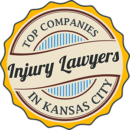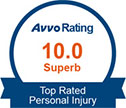The Missouri Highway State Patrol reports that there were 155,940 car accidents in the state in 2018. While there are countless ways in which accidents occur in Missouri, one of the most common types of collisions is the side-impact or “t-bone” accident. These accidents occur when one vehicle’s front end collides with the side of another vehicle, and they most often occur at intersections.
Why Side Impact Collisions are So Devastating
Any type of motor vehicle accident can be devastating and result in life-changing injuries, and that is definitely true of t-bone collisions. Given the angle and force involved in a side impact crash, these accidents present a substantial risk that the vehicle that is hit will collide with secondary vehicles or stationary objects. Many cars are not equipped with the same safety features, like airbags, that protect occupants in a front-end collision. Consequently, side impact collisions present a substantial risk of serious damage.
The Responsibility for T-Bone Accidents
Most times, the driver who collided with the side of another vehicle is found responsible for the accident, but this is not always the case. Sometimes, motorists who fail to stop for traffic signals are responsible for the collision. To establish fault after these accidents, attorneys often must rely on police reports, eyewitnesses, and testimony provided by accident reconstruction experts.
Tips for Limiting the Risk of Side Impact Accidents
Despite their devastating nature, there are some strategies that motorists can take to reduce the risk of ending up in a side-impact collision, which includes:
Do not expect all other motorists to also follow all traffic regulations. Instead, drive defensively and expect other motorists to not obey the rules of the road. Driving defensively means driving your vehicle in a way that anticipates that others will break the rules. A defensive driver will not be taken by surprise by another motorist who fails to stop at a stop sign or runs a red light.
Approach intersections at a speed that is slow enough that you can stop in case conditions require you to suddenly do so. This is one of the best ways to drive defensively because it greatly increases the chances that you will safely pass through an intersection.
Follow all traffic regulations, which include both stop signs and stop lights. Remember to stop when necessary, even when coming upon yellow lights. Similarly, make sure to completely stop when approaching stops and avoid the “rolling stop,” which can result in t-bone accidents.
Remember that not every intersection provides perfect visibility. Instead, visibility at many intersections is limited by objects like mailboxes, trees, weeds, and houses. In these situations, take extra care to cautiously approach the intersection to avoid colliding with other vehicles. If something is temporarily limiting your view, wait until the obstruction has vanished before passing through the intersection.
These tips are certainly not the only ways to practice driving defensively, but they will certainly help to limit the risk of t-bone accidents.
Speak with an Experienced Accident Attorney
Side impact collisions are often devastating because the side of vehicles is not as protected as the front or back. If you or a loved one was involved in a t-bone collision, do not hesitate to speak with attorney Aaron House at House Law LLC today by calling 816-875-4260 to schedule a free case evaluation.
Tags: car accident
Related Posts: Understanding Liability After Vehicular Crashes Caused by the Rain Driving Safely in Construction Zones Assessing Liability After Sideswipe Collisions




